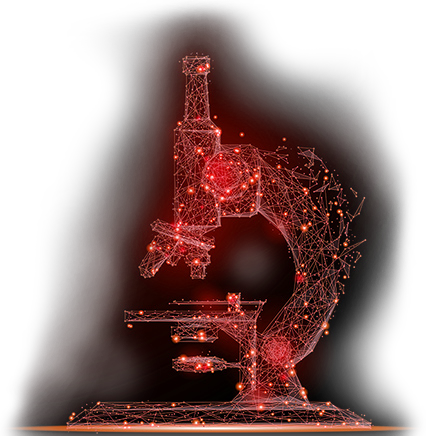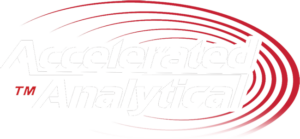COMMON MICROBIOLOGY TESTS
we offer at Accelerated Analytical Labs.

Accelerated Analytical Laboratories (AAL) operates a full cGMP-compliant microbiology lab dedicated to delivering high-quality microbial testing services for various industries, including but not limited to medical devices, pharmaceuticals, OTC, cosmetics, and personal care.
AAL’s microbiology testing lab conducts testing according to recognized industry standards and regulatory methods, including:
- United States Pharmacopeia (USP)
- FDA Bacteriological Analytical Manual (BAM)
- AOAC Official Methods of Analysis (OMA)
- Compendium of Methods for the Microbiological Examination of Foods (CMMEF)
- Customized protocols based on the above standards or client-specific requirements
Contact us to discuss a customized testing plan to your product and regulatory requirements.
Click on a test name to expand and learn more.
(AKA Bioburden or Microbial Limit Test)
Per USP 61, this test will allow quantitative enumeration of mesophilic bacteria and fungi that may grow under aerobic conditions and is typically reported as TAMC (Total Aerobic Microbial Count) and TYMC (Total Yeast and Mold Count). This test is designed primarily to determine whether a substance or preparation complies with an established specification for microbiological quality. Suitability of the chosen bioburden method must be established; i.e. the ability of the test to detect microorganisms in the presence of the product to be tested must be established.
This test provides an evaluation of the viable microorganisms, or bioburden load, of a sample ranging from raw materials to finished products.
Per USP <51>, this chapter provides procedures to demonstrate the effectiveness of added antimicrobial preservatives. This test is the industry’s most common method used to gauge preservative effectiveness and is used to evaluate the effect of preservatives in various products such as cosmetics, personal care products, and drug products.
AET testing may also be performed with different requirements than those listed in USP, per Client requirements. Challenge organisms are generally based on likely contaminants to a drug product while considering its physical attributes, formulation, and intended use.
We can develop customer-specific methods to detect the organisms of interest in your product(s).
The tests listed in USP 60 and 62 are performed to determine the presence or absence of a specified list of
microorganisms: Burkholderia cepacia (USP <60>), Bile-Tolerant Gram Negative Bacteria, Candida albicans, Clostridia,
Escherichia coli, Pseudomonas aeruginosa, Staphylococcus aureus, Salmonella. The tests are designed primarily to
determine whether a substance or preparation complies with an established specification for microbiological quality.
We can develop customer-specific methods to detect the organisms of interest in your product(s).
Microbial evaluation of a water system can be done via multiple pathways. Manufacturing facilities are typically required to meet specific requirements for water systems depending on the products being manufactured as well as the sources being utilized. Our team will work with you to determine the best route to take for your testing needs.
*water samples submitted for analysis will be processed within 24 hours of receipt by laboratory
Commonly requested Water Testing Services
- Enumeration of Microbial Load
- Customizable to meet requirements listed in various USP chapters as well as Client specific requirements
- Commonly performed alongside identification of recovered growth
- Presence or Absence of E.coli/Coliforms in Water System
- Detection of Pseudomonas spp. and Burkholderia cepacia complex
- Enumeration of Microbial Load
Environmental monitoring is a critical program for manufacturers and developers to ensure that facilities are in line with microbiological requirements for areas such as surfaces, equipment, and even air quality. AAL has the capability to enumerate environmental samples such as surface swabs and sponges, contact plates, and air sampling plates. In addition to tracking the microbial load of these samples, identification services may also be performed to assist in the categorization of results for alert and action limit reports, etc.
- We can provide sampling materials and consultation
Microbial Identification may be performed to multiple levels, depending on your testing needs. See the below offered options.
- Gram Stain of bacterial isolate(s)
- Classification of Objectionable Organisms
- The laboratory will determine if recovered growth is classified as an objectionable or specified organism per a Client-determined list.
- Species Identification
- The laboratory will determine the identification of a bacterial isolate to the species level.
- Fungal Identification
- The laboratory will determine the identification of a fungal isolate to the species level.
Challenge or Kill Time Studies are performed to measure the activity of an antimicrobial agent against specified organisms. The test measures the change in bacterial load within a specified “Kill Time” and determines the percentage of organisms killed over time. As with most offered analyses, this type of test is customizable and built to your testing needs.
Method Suitability or Method Validations are performed to ensure the ability of the test method to detect microorganisms in the presence of the product. This is a crucial step in the testing of any product as it guarantees that the results of the method used are accurate and can be trusted. Without performing a method suitability or validation, uncertainty remains in any results that are reported.

